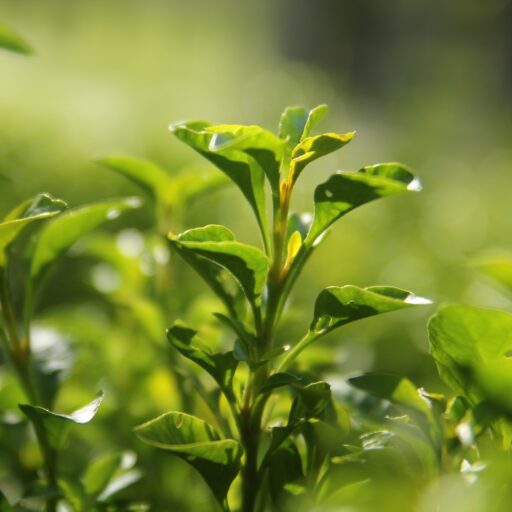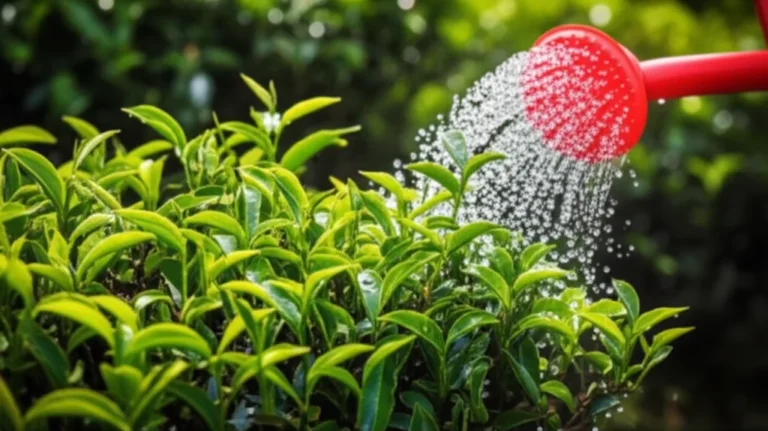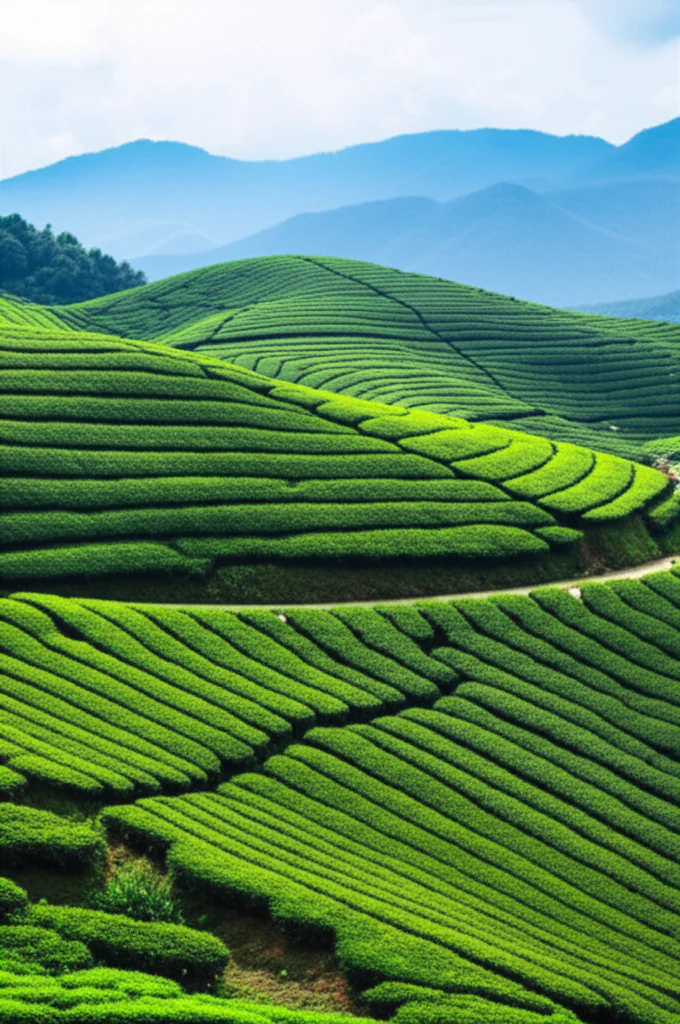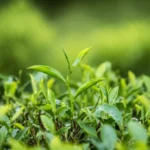Support our educational content for free when you purchase through links on our site. Learn more
What Kind of Soil Is Best for Growing Tea? 🌱 Discover the Secrets!
If you’ve ever wondered why some tea gardens produce leaves bursting with flavor while others yield lackluster brews, the secret often lies beneath the surface—in the soil. At Growing Teas™, we’ve spent years cultivating tea plants and unlocking the mysteries of the perfect growing medium. Spoiler alert: it’s not just any dirt! Tea plants are picky about their soil’s acidity, texture, and nutrient content, and getting these just right can transform your tea harvest from “meh” to magnificent.
Did you know that tea plants thrive best in acidic soils with a pH between 4.5 and 5.5? Or that long-term use of organic fertilizers not only improves soil health but also enhances tea flavor and yield? Stick around as we dig into the five essential soil factors every tea grower must master, share insider tips for indoor tea cultivation, and reveal how soil directly influences your cup’s aroma and taste. Ready to cultivate your own tea garden that rivals the world’s finest plantations? Let’s get our hands dirty!
Key Takeaways
- Tea plants prefer acidic, well-draining soils with a pH between 4.5 and 5.5 for optimal nutrient uptake and growth.
- Organic matter and slow-release organic fertilizers are crucial for maintaining soil health and boosting tea quality.
- Soil texture matters: loamy or sandy loam soils with good drainage are ideal, while heavy clay soils require significant amendment.
- Regular soil testing helps monitor pH and nutrient levels, preventing problems before they affect your plants.
- Indoor tea growing demands acidic, aerated potting mixes and careful moisture management to mimic natural soil conditions.
Unlock the secrets of tea soil and brew your perfect cup from the ground up!
Table of Contents
- ⚡️ Quick Tips and Facts About Tea-Growing Soil
- 🌱 The Soil Story: Why Soil Quality Is the Backbone of Tea Cultivation
- 🍃 Camellia Sinensis: The Soil Preferences of Tea’s Superstar Plant
- 1. Soil pH and Acidity: Finding the Sweet Spot for Tea Plants
- 2. Soil Texture and Drainage: The Dirt on What Tea Roots Crave
- 3. Nutrient Content and Organic Matter: Feeding Your Tea Plants Right
- 4. Soil Amendments and Fertilizers: Boosting Tea Soil Health
- 5. Managing Soil Moisture: Keeping Tea Roots Happy and Hydrated
- 🌿 Growing Tea Indoors: Soil Tips for Your Home Tea Garden
- 🌾 Soil Challenges in Different Tea-Growing Regions: From Assam to Darjeeling
- 🛠️ Soil Improvement Techniques: How to Fix Common Tea Soil Problems
- 🌼 Companion Plants and Soil Health: Enhancing Tea Growth Naturally
- 📊 Soil Testing for Tea Growers: What to Test and How Often
- 🍵 From Soil to Sip: How Soil Influences Tea Flavor and Quality
- 💡 Quick Soil Tips From Our Tea Growing Experts
- 📚 Recommended Links for Tea Soil Enthusiasts
- ❓ FAQs: Everything You Wanted to Know About Tea-Growing Soil
- 🔗 Reference Links and Further Reading
- 🎯 Conclusion: Mastering the Art of Tea Soil for a Perfect Brew
⚡️ Quick Tips and Facts About Tea-Growing Soil
Welcome to the dirt on tea soil! At Growing Teas™, we’ve dug deep into what makes soil the ultimate foundation for your tea garden. Here’s a quick rundown of essentials to get you started:
- Tea plants thrive in acidic soil with a pH between 4.5 and 5.5, ideally around 5.0 to 5.3.
- Well-draining soil is a must — soggy roots are a big no-no.
- Rich organic matter boosts soil fertility and moisture retention.
- Avoid heavy clay soils unless heavily amended for drainage.
- Use organic fertilizers like fermented manure to improve soil health and tea quality.
- Regular soil testing keeps you ahead of pH swings and nutrient deficiencies.
- Indoor tea plants prefer slightly acidic, well-aerated potting mixes designed for acid-loving plants like azaleas or camellias.
- Water consistently but avoid waterlogging; tea roots like moist, not swampy, conditions.
Curious about why acidity is such a big deal? Or how soil texture affects your tea’s flavor? Stick with us — we’ll spill the soil secrets soon! Meanwhile, check out our Growing Teas™ overview for more expert insights on cultivating your own tea.
🌱 The Soil Story: Why Soil Quality Is the Backbone of Tea Cultivation
Soil isn’t just dirt — it’s the living, breathing foundation of your tea plants’ health and flavor. At Growing Teas™, we’ve seen firsthand how the right soil can make or break your tea harvest. Here’s why soil quality matters:
- Nutrient availability: Tea plants need nitrogen, phosphorus, potassium, and micronutrients delivered through healthy soil.
- Root health: Loose, well-draining soil encourages deep, strong roots that support vigorous growth.
- Water management: Soil texture controls moisture retention and drainage — critical for preventing root rot or drought stress.
- pH balance: Tea plants are acid lovers; soil pH influences nutrient uptake and microbial activity.
- Microbial life: Rich organic soils foster beneficial microbes that improve nutrient cycling and plant immunity.
A fascinating study published in Frontiers in Plant Science (2023) confirmed that long-term use of organic fertilizer significantly improves soil pH, tea yield, and quality, while chemical fertilizers tend to acidify soil and reduce yields (source). This means your soil management strategy directly impacts not just plant health but the taste in your cup!
🍃 Camellia Sinensis: The Soil Preferences of Tea’s Superstar Plant
Let’s talk about the star of the show: Camellia sinensis, the evergreen shrub that gifts us green, black, white, oolong, and pu-erh teas. Knowing its soil preferences is key to success.
Varieties and Their Soil Needs
| Variety | Climate Preference | Soil pH Range | Notes |
|---|---|---|---|
| Camellia sinensis var. sinensis | Cooler, higher elevations | 4.5 – 5.5 | Smaller leaves, cold-hardy, delicate flavor |
| Camellia sinensis var. assamica | Warm, humid lowlands | 4.5 – 5.5 | Larger leaves, robust flavor, vigorous growth |
Both varieties prefer acidic, well-drained soils rich in organic matter. The pH sweet spot is around 5.0 to 5.3 — too alkaline or too acidic, and nutrient uptake suffers.
Soil Texture and Structure
Tea roots like loamy soils — a balanced mix of sand, silt, and clay — that retain moisture but drain excess water. Heavy clay soils can suffocate roots, while sandy soils may dry out too quickly.
1. Soil pH and Acidity: Finding the Sweet Spot for Tea Plants
Why does pH matter so much? Because it controls nutrient availability and microbial activity in the soil. Tea plants are acidophiles — they thrive in acidic soils.
Ideal pH Range
- Optimal: 4.5 to 5.5 (most experts agree 5.0 to 5.3 is perfect)
- Too acidic (<4.5): Nutrient lockout, root damage
- Too alkaline (>6.0): Deficiencies in iron, manganese, and other micronutrients
Managing Soil pH
- Use soil tests regularly to monitor pH.
- Amend with elemental sulfur or aluminum sulfate to lower pH if too high.
- Add lime cautiously if soil is too acidic (rare for tea).
- Incorporate organic matter like pine needles or peat moss to maintain acidity naturally.
A landmark study (PMC article) showed that long-term organic fertilizer use stabilizes soil pH around 5.1–5.3, improving tea yield and quality dramatically compared to chemical fertilizers.
2. Soil Texture and Drainage: The Dirt on What Tea Roots Crave
Tea roots need to breathe! That means soil must be well-draining yet moisture-retentive.
Soil Types Ranked for Tea Growing
| Soil Type | Drainage | Moisture Retention | Suitability for Tea | Notes |
|---|---|---|---|---|
| Loam | Moderate | Good | ✅ Excellent | Ideal balance for tea roots |
| Sandy Loam | Fast | Moderate | ✅ Good | May need extra organic matter |
| Clay | Poor | High | ❌ Poor | Risk of waterlogging and root rot |
| Peaty Soil | Good | High | ✅ Good | Naturally acidic, great for tea |
| Silty Soil | Moderate | Moderate | ✅ Good | Fertile but may compact easily |
Tips for Improving Drainage
- Mix in coarse sand or perlite to loosen heavy soils.
- Add compost or leaf mold to boost organic matter and aeration.
- Avoid planting in low-lying areas prone to waterlogging.
3. Nutrient Content and Organic Matter: Feeding Your Tea Plants Right
Tea plants are nutrient-hungry, especially for nitrogen, which fuels leafy growth.
Essential Nutrients for Tea
| Nutrient | Role | Sources |
|---|---|---|
| Nitrogen (N) | Leaf and shoot growth | Organic compost, manure, blood meal |
| Phosphorus (P) | Root development, energy transfer | Bone meal, rock phosphate |
| Potassium (K) | Disease resistance, flavor | Wood ash, kelp meal |
| Calcium (Ca) | Cell wall strength | Lime (sparingly), gypsum |
| Magnesium (Mg) | Chlorophyll production | Epsom salts, dolomite lime |
| Micronutrients | Enzyme function, metabolism | Balanced organic fertilizers |
Organic Matter Benefits
- Improves soil structure and moisture retention.
- Supports beneficial microbes that help nutrient cycling.
- Buffers soil pH, preventing rapid swings.
Our team swears by fermented sheep manure and composted leaf mold as organic amendments that keep tea plants happy and productive.
4. Soil Amendments and Fertilizers: Boosting Tea Soil Health
Chemical fertilizers might give a quick boost, but long-term soil health depends on organic amendments.
Organic vs. Chemical Fertilizers for Tea
| Aspect | Organic Fertilizers | Chemical Fertilizers |
|---|---|---|
| Soil pH Impact | Stabilizes or slightly raises pH | Often causes acidification |
| Nutrient Release | Slow, steady release | Quick, risk of leaching |
| Soil Microbial Health | Enhances microbial diversity | Can harm beneficial microbes |
| Environmental Impact | Sustainable, eco-friendly | Potential pollution and runoff |
| Tea Yield & Quality | Improves yield and flavor (see PMC study) | May reduce yield over time |
Recommended Organic Amendments
- Fermented sheep manure (rich in nitrogen, phosphorus, potassium)
- Composted green waste and leaf mold
- Pine needle mulch to maintain acidity
- Azalea or camellia-specific fertilizers (available from brands like Espoma and Miracle-Gro)
5. Managing Soil Moisture: Keeping Tea Roots Happy and Hydrated
Tea plants like consistent moisture but hate soggy feet. Striking this balance is an art.
Best Practices for Soil Moisture
- Water deeply but infrequently to encourage deep root growth.
- Use mulch (pine needles, straw) to reduce evaporation and maintain even moisture.
- Ensure good drainage to prevent waterlogging and root rot.
- Avoid letting soil dry out completely, especially during hot spells.
Indoor growers: use pots with drainage holes and well-draining acidic potting mixes (azalea or camellia mixes are perfect). Water when the top inch of soil feels dry.
🌿 Growing Tea Indoors: Soil Tips for Your Home Tea Garden
Want to sip your own homegrown green or black tea? Growing tea indoors is totally doable with the right soil setup!
Indoor Soil Mix Recommendations
- Use a high-quality acidic potting mix designed for acid-loving plants (e.g., Espoma Organic Azalea Mix).
- Amend with perlite or pumice for aeration and drainage.
- Add organic compost or worm castings for nutrients.
Container and Drainage
- Choose pots at least 12 inches in diameter with drainage holes.
- Terracotta pots are great for breathability and moisture regulation.
Watering and Fertilizing
- Keep soil moist but not soggy; water when the top inch is dry.
- Fertilize every 4-6 weeks during growing season with a balanced, acid-loving plant fertilizer.
For more indoor tea growing tips, check our Herbal Tea Planting category.
🌾 Soil Challenges in Different Tea-Growing Regions: From Assam to Darjeeling
Tea soil isn’t one-size-fits-all. Different regions face unique soil challenges:
| Region | Soil Type | Common Issues | Solutions |
|---|---|---|---|
| Assam, India | Acidic, loamy | Heavy rainfall causes leaching | Mulching, organic matter addition |
| Darjeeling | Sandy loam, acidic | Soil erosion on slopes | Terracing, cover crops |
| Uji, Japan | Volcanic, well-drained | Nutrient depletion | Regular organic fertilization |
| Kenya | Red volcanic soil | pH fluctuations, nutrient loss | Soil testing, lime application |
Understanding your local soil and climate is crucial. Our team recommends soil testing and tailored amendments for optimal results.
🛠️ Soil Improvement Techniques: How to Fix Common Tea Soil Problems
Got heavy clay? Too alkaline? Soil problems can be fixed with some TLC:
- Heavy clay: Incorporate coarse sand, compost, and organic matter to improve drainage and aeration.
- Alkaline soil: Add elemental sulfur or pine needle mulch to lower pH gradually.
- Compacted soil: Double-dig or aerate to loosen roots.
- Nutrient-poor soil: Apply organic fertilizers and compost regularly.
Patience is key — soil improvement is a marathon, not a sprint!
🌼 Companion Plants and Soil Health: Enhancing Tea Growth Naturally
Did you know some plants can boost your tea soil’s health? Companion planting can:
- Fix nitrogen (legumes like clover) to enrich soil naturally.
- Attract beneficial insects and pollinators.
- Provide shade and reduce soil evaporation.
Try planting shade trees like Albizia or nitrogen-fixing cover crops between tea rows to improve soil fertility and microclimate.
📊 Soil Testing for Tea Growers: What to Test and How Often
Regular soil testing is your best friend for tea success.
What to Test?
- pH level — critical for nutrient availability.
- Macronutrients: Nitrogen, phosphorus, potassium.
- Micronutrients: Iron, magnesium, calcium, manganese.
- Organic matter content.
How Often?
- At least once per year, ideally before the growing season.
- More frequently if you notice plant stress or after soil amendments.
Many labs offer affordable soil testing kits. We recommend contacting your local agricultural extension service or using commercial labs like Logan Labs.
🍵 From Soil to Sip: How Soil Influences Tea Flavor and Quality
Ever wondered why teas from Darjeeling taste so different from Assam? Soil plays a starring role:
- Mineral content affects leaf chemistry and flavor compounds.
- Soil pH influences catechin and theanine levels, impacting bitterness and umami.
- Organic matter supports microbial activity that can enhance nutrient uptake and flavor precursors.
Our Growing Teas™ team has tasted the difference firsthand: teas grown in well-balanced, organic-rich soils have richer aroma, smoother mouthfeel, and better complexity.
💡 Quick Soil Tips From Our Tea Growing Experts
Here’s what we’ve learned after years of tea cultivation:
- Test your soil early and often. Don’t guess!
- Go organic whenever possible — your soil and tea will thank you.
- Keep soil moist but not soggy. Mulch is your best friend.
- Avoid chemical fertilizers long-term; they acidify soil and harm microbes.
- Use acid-loving plant mixes for indoor tea.
- Prune your tea plants regularly to encourage healthy roots and shoots.
Want to see these tips in action? Don’t miss the first YouTube video embedded above — it’s a fantastic guide to growing your own tea plant in containers!
📚 Recommended Links for Tea Soil Enthusiasts
- Growing Teas™ Green Tea Cultivation
- Herbal Tea Planting Tips
- Health Benefits of Tea
- DIY Tea Blending
- History of Tea
- USDA Soil pH Guidelines
- Soil Testing Labs Directory
❓ FAQs: Everything You Wanted to Know About Tea-Growing Soil
Q: Can I grow tea in neutral or slightly alkaline soil?
A: ❌ Not ideal. Tea plants prefer acidic soil (pH 4.5–5.5). Neutral or alkaline soils limit nutrient uptake and stunt growth.
Q: How often should I fertilize my tea plants?
A: Every 4-6 weeks during the growing season with organic or acid-loving plant fertilizer.
Q: Can I use garden soil for my tea plants?
A: It depends. If your garden soil is acidic, well-drained, and rich in organic matter, yes. Otherwise, amend heavily or use specialized potting mixes.
Q: What if my soil is too sandy?
A: Add organic matter like compost or peat moss to improve moisture retention and nutrient content.
Q: How do I test soil pH at home?
A: Use a reliable soil pH meter or test kit available at garden centers or online.
Q: Will chemical fertilizers harm my tea plants?
A: Long-term use can acidify soil and reduce tea quality. Organic fertilizers are preferred for sustainable growth.
🔗 Reference Links and Further Reading
- PMC Article on Soil Acidification and Fertilizer Effects
- Anawalt Lumber: How to Grow a Tea Garden at Home
- Japanese Green Tea Info: Growing Tea Plants in Your Yard
- USDA Soil Health Resources
- Espoma Organic Azalea Fertilizer on Amazon
- Miracle-Gro Acid-Loving Plant Food
🎯 Conclusion: Mastering the Art of Tea Soil for a Perfect Brew
So, what kind of soil is best for growing tea? The answer is clear: acidic, well-draining, organically rich soil with a pH between 4.5 and 5.5 is the gold standard. Our Growing Teas™ team has seen that when you get the soil right, your tea plants reward you with vigorous growth, higher yields, and leaves bursting with flavor and healthful compounds.
We’ve also learned that long-term use of organic fertilizers like fermented sheep manure and compost not only maintains ideal soil pH but enhances tea quality and yield significantly, while chemical fertilizers tend to acidify soil excessively and harm plant health over time (PMC study).
For indoor growers, using acid-loving potting mixes designed for camellias or azaleas, combined with proper drainage and watering, makes cultivating your own tea a rewarding adventure, even in small spaces.
Remember the question we teased earlier: Why is acidity such a big deal? Now you know — it’s the key that unlocks nutrient availability and microbial magic beneath the surface, shaping the very essence of your tea’s taste and vitality.
So, roll up your sleeves, test that soil, enrich it organically, and get ready to brew your own perfect cup. Your tea garden — and your taste buds — will thank you!
📚 Recommended Links
Ready to get your hands dirty with the best soil amendments and fertilizers? Here are some top picks and resources to help you cultivate tea like a pro:
- Espoma Organic Azalea Fertilizer: Amazon | Espoma Official Website
- Miracle-Gro Acid-Loving Plant Food: Amazon | Miracle-Gro Official Website
- Fermented Sheep Manure (Organic Fertilizer): Amazon
- Soil pH Test Kit: Amazon
- Books on Tea Cultivation and Soil Health:
❓ FAQs: Everything You Wanted to Know About Tea-Growing Soil
What pH level is ideal for tea plant soil?
Tea plants flourish in acidic soils with a pH between 4.5 and 5.5, with 5.0 to 5.3 being optimal. This acidity ensures essential nutrients like iron, manganese, and nitrogen are available for uptake. Outside this range, nutrient deficiencies or toxicities can occur, hampering growth and flavor development.
Can clay soil be used for growing tea?
Clay soil is generally not ideal for tea cultivation because it retains too much water, leading to poor drainage and root oxygen deprivation. However, if you amend clay soil heavily with organic matter (compost, leaf mold) and coarse sand or perlite, you can improve aeration and drainage to make it suitable. Without amendment, clay soil risks root rot and stunted growth.
How does soil drainage affect tea plant growth?
Good drainage is critical for tea plants. Roots need moisture but also oxygen; waterlogged soils suffocate roots and promote diseases like root rot. Well-draining soils balance moisture retention with air space, supporting healthy root systems and nutrient uptake. Mulching and soil amendments help maintain this balance.
What nutrients are essential in soil for tea cultivation?
Tea plants require a balanced supply of:
- Nitrogen (N): Promotes lush leaf and shoot growth.
- Phosphorus (P): Supports root development and energy transfer.
- Potassium (K): Enhances disease resistance and flavor quality.
- Calcium (Ca) and Magnesium (Mg): Important for cell structure and chlorophyll production.
- Micronutrients: Iron, manganese, zinc, and others are vital in trace amounts.
Organic fertilizers and compost are excellent sources that release nutrients slowly and improve soil health.
Is sandy soil suitable for tea farming?
Sandy soil can be used but often requires amendment. It drains quickly and may not retain sufficient moisture or nutrients. Adding organic matter like compost or peat moss improves water retention and nutrient availability, making sandy soils more hospitable for tea plants.
How to prepare soil for planting tea bushes?
- Test soil pH and nutrients to understand baseline conditions.
- Amend soil to achieve pH 4.5–5.5 using elemental sulfur or organic mulches if necessary.
- Incorporate organic matter such as compost, leaf mold, or fermented manure to improve fertility and structure.
- Improve drainage by mixing in coarse sand or perlite if soil is heavy.
- Remove weeds and debris, and loosen soil to a depth of 12–18 inches for root penetration.
- Mulch around plants to conserve moisture and maintain acidity.
What organic matter improves soil quality for tea plants?
The best organic matter includes:
- Composted leaf mold: Enhances soil structure and moisture retention.
- Fermented sheep manure: Rich in nitrogen, phosphorus, and potassium, proven to improve tea yield and quality (PMC study).
- Pine needles or pine bark mulch: Helps maintain soil acidity.
- Green compost: Adds nutrients and supports beneficial soil microbes.
Regular addition of these materials fosters a vibrant soil ecosystem that nurtures tea plants.
How often should I test my tea garden soil?
Testing at least once a year, preferably before the growing season, helps you track pH and nutrient levels. More frequent tests are advisable if you notice plant stress or after applying amendments. This proactive approach prevents problems before they affect your harvest.
Can I grow tea plants in pots or containers?
Absolutely! Use acidic, well-draining potting mixes designed for camellias or azaleas, with added perlite for aeration. Ensure pots have drainage holes, water consistently but avoid sogginess, and fertilize regularly with acid-loving plant food. Indoor tea growing is a rewarding way to enjoy fresh tea leaves year-round.
🔗 Reference Links and Further Reading
- Improvement of Soil Acidification in Tea Plantations by Long-Term Use of Organic Fertilizer — A comprehensive scientific study on soil pH management and tea yield.
- Growing Teas™ Green Tea Cultivation
- Growing Teas™ Herbal Tea Planting
- Espoma Organic Azalea Fertilizer Official Site
- Miracle-Gro Acid-Loving Plant Food Official Site
- USDA Soil Health Resources
- Soil Testing Labs Directory by USDA
Ready to dig in and grow your own tea? Let’s get that soil perfect and brew the freshest cup you’ve ever tasted! 🌿🍵








